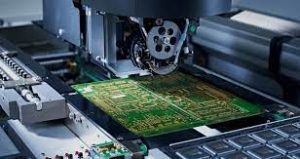What Documentation is Necessary for PCB Circuit Board Assembly?
Necessary for PCB Circuit Board Assembly
PCB circuit board assembly involves soldering components, such as resistors, diodes, integrated circuits, and capacitors, to a printed circuit board (PCB) to create an electronic device. The assembly process requires detailed documentation and precise work to ensure a reliable, high-quality product. Inefficient assembly procedures can result in costly errors or even failure of the final product. The best way to avoid these problems is through clear labeling and thorough documentation, including component reference designators and special assembly instructions. These documents can be shared with a contract manufacturer to facilitate a smooth assembly process.
The first step in creating PCB assembly documentation is the creation of a bill of materials (BOM). A BOM outlines all the parts and quantities required for manufacturing, helping the fabricator quickly identify and locate each component. It also provides a list of alternate parts in case one or more are unavailable or unsuitable for the project. The BOM should include the manufacturer’s part number, a brief description of the component, and its physical dimensions and footprint. It should also indicate the procurement method, whether purchased from an external supplier or fabricated in-house.
Once the BOM is complete, the next piece of crucial documentation for effective pcb circuit board assembly is an assembly drawing. These drawings display the component locations on the PCB and provide important details, such as polarity and orientation for polarized components. They can also include drill symbols to specify the PCB hole sizes and locations. This information is essential for ensuring that the component placements match up with their locations on the actual board, preventing errors during assembly.

What Documentation is Necessary for PCB Circuit Board Assembly?
In addition to assembly drawings, the PCB fabrication team needs a schematic file that can be used to simulate the behavior of the circuit before it is physically implemented on the board. This allows the engineer to identify potential issues and optimize the circuit’s functionality. The schematic file should include detailed annotations to identify each component with unique reference designators and identifiers. It should also provide information regarding the location and orientation of each component, facilitating the assembly process.
Other essential PCB assembly documentation includes the gerber files, which are used to define the shape of the PCB and the locations of all the holes. These files must be correctly paired with the drill chart to create a complete set of documents that can be used for the bare board fabrication and assembly process.
In order to facilitate the assembly process, a thoughtful PCB design should be used. A logical layout of the components will minimize trace lengths and reduce the chances of errors during soldering. In addition, the designers should try to use standardized components whenever possible to reduce assembly time and costs. Lastly, the design should be testable to reduce the amount of time spent on troubleshooting and repair. The best way to do this is to incorporate Design for Testing (DFT) principles into the initial design stages and conduct regular design reviews with assembly staff.